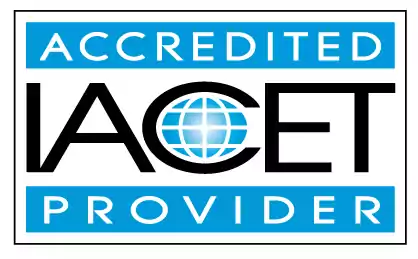Identify best practices in room arrangement for the preschool setting.
Central Objective: Identify best practices in room arrangement for the preschool setting to create safe, engaging spaces that support early learning. Supporting Elements: Identify best practices in room arrangement to optimize space, flow, and accessibility across centers, furniture layout, and transitions for early childhood education and child care centers.Trainings incorporating this outcome
Proficiency Level
Target Audience
Topic Areas
States
Alabama (4) Alaska (4) Alberta (4) Arizona (4) Arkansas (1) Australia (4) California (4) Colorado (4) Connecticut (4) Delaware (4) District of Columbia (4) Florida (4) Georgia (3) Hawaii (4) Idaho (4) Illinois (2) Indiana (4) Iowa (4) Jamaica (4) Kansas (4) Kentucky (1) Louisiana (4) Maine (4) Manitoba (4) Maryland (4) Massachusetts (4) Michigan (4) Minnesota (4) Mississippi (4) Missouri (1) Montana (4) Nebraska (3) Nevada (3) New Hampshire (4) New Jersey (3) New Mexico (4) New York (3) Newfoundland and Labrador (4) North Carolina (1) North Dakota (4) Nova Scotia (4) Ohio (4) Oklahoma (4) Ontario (1) Oregon (3) Pennsylvania (2) Prince Edward Island (4) Puerto Rico (4) Quebec (4) Rhode Island (4) Saskatchewan (4) South Carolina (1) South Dakota (4) Tennessee (1) Texas (3) Thailand (4) United Kingdom (4) Utah (4) Vermont (4) Virgin Islands (4) Virginia (4) Washington (4) West Virginia (4) Wisconsin (4) Wyoming (4)
45 hours courses
3 hours courses
Related Outcomes
- Identify best practices in room arrangement
- Identify appropriate practices for identify and demonstrate an children: Identify examples of appropriate activities for different ages
- Identify appropriate practices for identify and demonstrate an children: Define Developmentally Appropriate Practice
- Identify optimal room arrangements by comparing multiple childcare settings.
- Identify appropriate practices for identify and demonstrate an children: Identify importance of individual planning
- Identify appropriate practices for identify and demonstrate an children: components of a lesson plan
- Identify strategies and practices for preventing shaken baby syndrome and abusive head trauma in the child care setting
- Identify appropriate practices communicable diseases/illnesses and immunizations and their schedules in child care setting
- Demonstrate an understanding of inclusionary practices in the preschool setting.
- Identify best practices when communicating with emergency personnel.
- Identify appropriate practices for identify and demonstrate an children: Teacher directed vs child directed
- Explain inclusionary practices in the preschool setting.
- Identify appropriate practice for the identification, prevention, and treatment of communicable diseases and illnesses in child care setting
- Demonstrate understanding of optimal room arrangements for family child care settings and their components.
- Demonstrate an understanding of optimal room arrangements for family child care settings and their components.
- Demonstrate understanding of inclusionary practices for developmental disabilities in the childcare setting.
- Demonstrate understanding of inclusionary practices for autism spectrum disorder in the child care setting.
- Identify safe practices with infants including SIDS, Abusive Head Trauma, and SBS.
- Demonstrate understanding of inclusionary practices for ADHD in the child care setting.
- Demonstrate understanding of positive alternatives of timeouts and certain disciplining techniques based on best practices.
Related Articles
- Formats For Setting Up Parent Contracts
- Effective and Engaging Classroom and Home Daycare Room Arrangements
- Rethinking Your Classroom Arrangement
- Active Supervision: The Only Way to Care for Children
- Tips for designing your early childhood classroom space
- CDA Subject Area 1 Training: A Targeted Approach to Early Childhood Education
- The Role of Safe Sleep Practices in Reducing SIDS Risk
- Trauma-Informed Care: Why Your Classroom Isn’t Complete Without a Little Extra Empathy
- Protecting Infants and Preventing Sleep-Related Incidents
- Why Safe Sleep Training Matters: Preventing SIDS and Promoting Infant Well-Being
- Safe Sleep Training for Infants: Prevent SIDS
- SIDS Awareness: Safe Sleep Training for New Parents
- 🖍️Ready, Set, Set Up! A Daycare Teacher’s Guide to a Dreamy Classroom
- Play, Explore, Grow: Fresh Curriculum Ideas to Spark Joy in Your Preschool or Daycare
- Understanding Separation Anxiety in Young Children
- 🚀How Can New Staff Quickly Get Oriented to North Dakota’s Childcare Standards?
- What Training Is Required to Be a Childcare Director in Nevada?
- Best Practices for Managing a Child Care Classroom or Program
- How to Handle Challenging Behaviors in Early Childhood Settings
 4.5 CEUs
4.5 CEUs